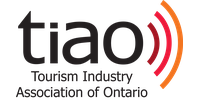Yesterday afternoon, TIAO President and CEO Andrew Siegwart presented before the Standing Committee on Finance and Economic Affairs in St. Catharines.
Andrew shared six recommendations to ensure Ontario’s tourism industry continues to thrive in an increasingly uncertain market prior to finalizing our Pre Budget submission. These included:
1. Increase Marketing Investment
Destination Ontario leads tourism marketing with an impressive performance record. Unfortunately, it receives about $10 million less in annual marketing funding than its BC, Alberta, and Quebec counterparts. TIAO recommends that Destination Ontario’s marketing funding be increased to levels at least on par with these competing provinces to attract more domestic, U.S., and overseas visitors, driving spending, mitigating risk, increasing tax revenue, and creating jobs province-wide.
2. Seize Indigenous Tourism Opportunity
Indigenous tourism is Ontario’s fastest-growing tourism sector, contributing $622 million annually to GDP. With 1 in 3 international visitors and 40% of Canadians interested in Indigenous experiences, this sector offers significant economic and social ROI.
We recommend extending the Skills Development Fund into 2025, with a priority on Indigenous tourism projects to fuel job creation, product development, and economic growth.
3. Bolster Business, Sport, and Culture Tourism Bids
Business, sport and cultural events drive significant business to: convention centres, accommodations, food services, attractions, and transportation providers. Increasing global competition and bid support programs are leaving Ontario destinations at a disadvantage.
We propose a bid-support program that includes loans, cost-matching, or non-repayable contributions to help municipalities and destinations submit competitive event bids. This would enable Ontario destinations to attract major business, cultural and sporting events, driving inbound visitation, and spending.
4. Optimize the Municipal Accommodation Tax (MAT) Framework
Since 2017, MAT frameworks have been active in over 50 municipalities; tourism’s success is now directly linked to municipal fiscal health.
Unfortunately, unclear regulations have resulted in slow, complex, and inefficient implementations thus far. We recommend updating the current regulation for clarity and to stimulate more implementations across Ontario. A few examples include:
- Include a formal rate change process
- Include industry consultation on municipal funds use decision making
- Ensure short term rental businesses participate
- Reducing red tape for tourism entities
- Clarifying the purpose of MAT and what defines ‘promotion of tourism’
5. Workforce Development
Ontario’s tourism job vacancy rate for 2024 was expected to be 4.7% and will rise to 5.9% by 2027. This will worsen due to federal reductions in immigration and international student levels.
To mitigate these challenges, we recommend that the province:
- Advocate federally to expand post-graduation work permit eligibility to include tourism and hospitality programs and to secure pathways to permanent residency for Ontario-educated individuals securing work with in-demand occupations.
- Collaborate with tourism to create a domestic workforce program to connect underemployed Ontarians with meaningful, in-demand tourism jobs through an extended Skills Development Fund for 2025.
6. Improve Access Through Transportation
Reliable transportation is essential for tourism growth. Current challenges include declining regional air service, inadequate EV charging infrastructure, and gaps in regional bus and rail connectivity.
We recommend:
- Joint TIAO/Provincial advocacy to the federal government to remove barriers to restoring regional air service.
- Expanding EV charging infrastructure in rural and seasonal destinations.
- Enhancement of regional public transit options and roadside amenities, and
- Improving ground transportation by including private motorcoach operators in transit funding.
